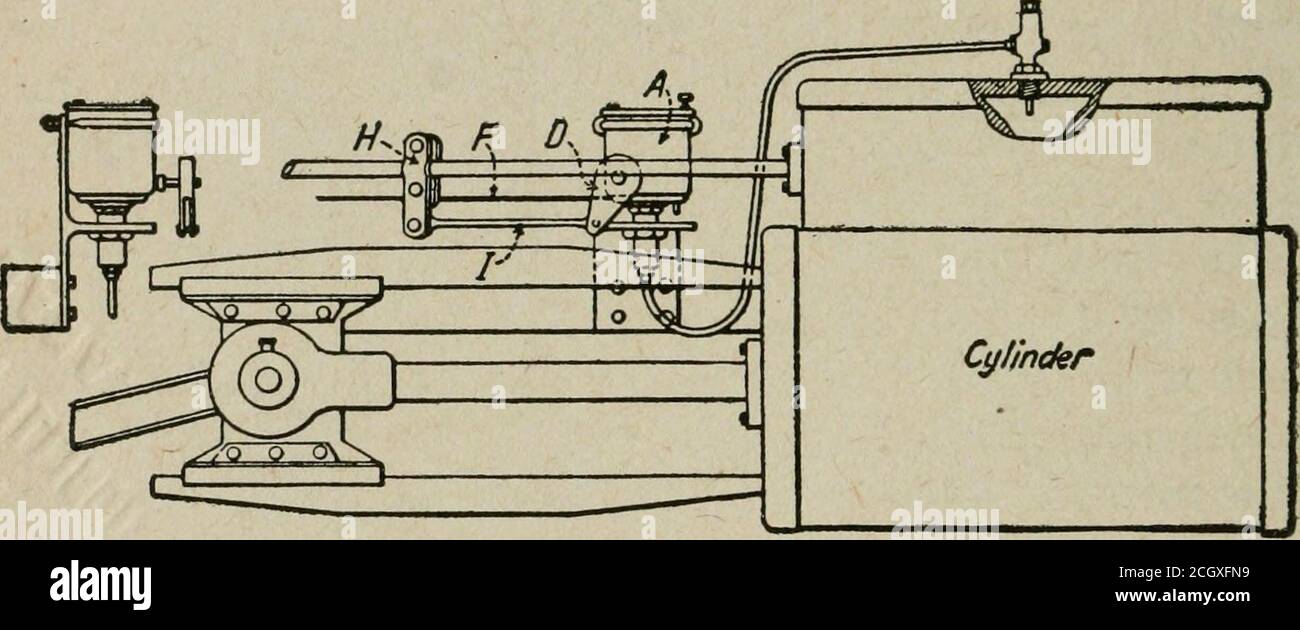. Science of railways . uxiliary, oils and greases have only to sepa-rate two highly polished and perfectly filled sur-faces, and thus reduce friction to the minimum. 471 472 LOCOMOTIVE APPLIANCES. AUTOMATIC FORCE FEED GRAPHITE LUBRICATOR. The device herewith illustrated is intended for lubricating-valves and cylinders with a mixture of extra fine crystallinegraphite and oil. As a result the surfaces soon become coatedwith a thin film of graphite, reducing the friction between theparts, as compared with the use of oil, and also considerablyincreasing the number of miles run per pint of lubrica

Image details
Contributor:
Reading Room 2020 / Alamy Stock PhotoImage ID:
2CGXFN9File size:
7.1 MB (267.5 KB Compressed download)Releases:
Model - no | Property - noDo I need a release?Dimensions:
2452 x 1019 px | 41.5 x 17.3 cm | 16.3 x 6.8 inches | 150dpiMore information:
This image is a public domain image, which means either that copyright has expired in the image or the copyright holder has waived their copyright. Alamy charges you a fee for access to the high resolution copy of the image.
This image could have imperfections as it’s either historical or reportage.
. Science of railways . uxiliary, oils and greases have only to sepa-rate two highly polished and perfectly filled sur-faces, and thus reduce friction to the minimum. 471 472 LOCOMOTIVE APPLIANCES. AUTOMATIC FORCE FEED GRAPHITE LUBRICATOR. The device herewith illustrated is intended for lubricating-valves and cylinders with a mixture of extra fine crystallinegraphite and oil. As a result the surfaces soon become coatedwith a thin film of graphite, reducing the friction between theparts, as compared with the use of oil, and also considerablyincreasing the number of miles run per pint of lubricant. The device, or pump, which is automatic in action, is placednear the cylinder, one on each side, as shown in Fig. 1, and isoperated by a connection with the valve rod. It does not requireany attention on the part of the engine crew except for adjust-ment at the beginning of the run. Nor does it require muchattention on the part of the engine house force except for the occa-sional replacing of a small leather washer.. Fig-. 1. Graphite Lubricator Applied to Locomotive. One of the troubles in using graphite as a lubricant has beenthe difficulty of feeding it to the cylinders properly. The troublehas been to keep the graphite in suspension in oil or other fluids.In this device the accomplishment is claimed to be made bystirring or agitating the mixture continuously until it reaches thesteam chest. It does this in the following manner: The pump, which is enclosed in a brass casting A, Fig. 1, issecurely fastened in place, as shown. The lubricant, to the extentof three pints, is introduced by removing the top of the casting.As indicated in Fig. 2, a fine screen is fitted in the top of thedevice through which the lubricant must pass. Directly under-neath the screen is a circular box-shaped casting supported on twopivots. A short arm projects downward from this casting at theright; at its lower end is a toothed sector which meshes with asmall pinion on the end of the shaft that ex